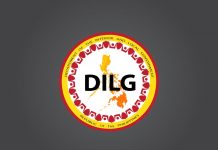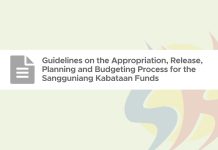Local government units (LGUs) and barangays along the Manila Bay Watershed Area are now expected to conduct weekly clean-up drives to hasten the rehabilitation of Manila Bay starting January 27, 2019 to coincide with the Manila Bay Rehabilitation Program kick-off activities, according to the Department of the Interior and Local Government (DILG).
DILG Secretary Eduardo M. Año says that the order and resolve of President Rodrigo Duterte is crystal clear regarding the rehabilitation of the Manila Bay and the weekly clean-up will ensure that this directive is enforced.
“The collective efforts and commitment of the LGUs and barangays within the Manila Bay Watershed Area would spell the difference in the rebirth and preservation of our Manila Bay,” Año says.
“As we all know, Manila Bay is polluted and partly, we have ourselves to blame. But it’s not too late, we can still make amends. Sabay-sabay at sasama po nating buhayin ang ating Manila Bay,” he adds.
Año directs 178 LGUs and 5,714 barangays inside the Manila Bay Watershed Area through DILG Memorandum Circular No. 2019-09 released on January 24, 2019 to “fulfill their roles and responsibilities pursuant to environmental laws that contribute to the rehabilitation of Manila Bay.”
Section 20 of the Philippine Clean Water Act of 2004 provides that LGUs shall share the responsibility in the management and improvement of water quality within their jurisdictions.
Similarly, the Local Government Code states that barangays are required to do basic services which include, but not limited to services and facilities related to hygiene and sanitation, beautification, and solid waste collection.
“Sa pamamagitan po nito ay matiyaga naming ipinapaalala sa mga LGU at barangays na sa ilalim ng ating batas ay mayroon silang responsibilidad at pananagutan sa pagpapanatili ng Manila Bay at ng ating Inang Kalikasan,” he explains.
In the said memorandum, the DILG Secretary says that LGUs and barangays must organize clean-up drives in their localities such as, but not limited to coastal areas and/or inland water systems, on a weekly basis commencing on January 27, 2019.
He also says that LGUs and barangays can solicit the support of volunteers, non-government organizations, civil society organizations, academe, among others, “to encourage participation from different stakeholders in the conduct of the clean-up drive.”
DILG, together with the Department of Environment and Natural Resources and other national government agencies, was directed by President Duterte to pool efforts “to start cleaning the Manila Bay.”
It starts in the barangays
In a separate memorandum, Año enjoins the 5,714 barangays within the Manila Bay Watershed Area to participate in the kick-off activities for the launching of the Manila Bay Rehabilitation Project.
Through DILG Memorandum 2019-07, the DILG Chief emphasized the vital role barangays and its officials play to “put an end to the decade-long problem of pollution in the waters of Manila Bay.”
“Barangays are important partners of the national government in the rehabilitation of Manila Bay as specified under Republic Act 7160. Kaya naman inaasahan natin na makakaisa namin kayo sa adhikaing ito,” he says.
He says that barangays are expected to partake in the drive to renew Manila Bay by conducting clean-up drives in their communities by leading the eco-waste management in their respective barangays.
The memorandum states that Punong Barangays must ensure that all barangay officials and employees shall participate in the clean-up activities; that proper segregation, collection and disposal of clean-up wastes shall be observed at all times; and to document said activity for an increased public awareness for social media postings with the hashtags #MBCleanUp and #MBCleanUp(Barangay’s name).
“Pangunahan ninyo ang paghikayat at pagkakaroon ng disiplina para sa maayos na pagtatapon ng mga basura sa inyong lugar sa halip na ihagis ito sa katubigan ng Manila Bay,” Año says. ###




